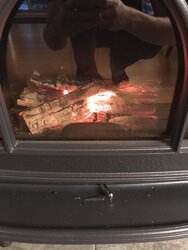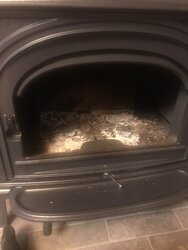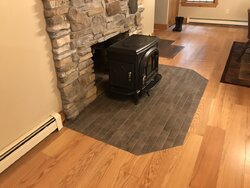Hi All,
I am the owner of a new Jotul F500. I have been doing my break in burns at 200, 300 and now 400 degrees. I have noticed that when my wood starts to burn down all the flames go away and it the logs just glow red and you can see the air blowing on them. Is this normal to have logs not on fire when they are still a pretty good size? Is this going to clog up my chimney due to smoldering. I have tried opening the air all the way and you can visibly see the air pick up but no flames.
Also I had a little trouble getting it up to 400 I may have not had enough wood as I was nervous of getting it too hot
Jotul F500, 27 foot interior chimney with 6” insulated liner. Currently about 68 degrees out.
I am the owner of a new Jotul F500. I have been doing my break in burns at 200, 300 and now 400 degrees. I have noticed that when my wood starts to burn down all the flames go away and it the logs just glow red and you can see the air blowing on them. Is this normal to have logs not on fire when they are still a pretty good size? Is this going to clog up my chimney due to smoldering. I have tried opening the air all the way and you can visibly see the air pick up but no flames.

Also I had a little trouble getting it up to 400 I may have not had enough wood as I was nervous of getting it too hot
Jotul F500, 27 foot interior chimney with 6” insulated liner. Currently about 68 degrees out.
Last edited by a moderator:



